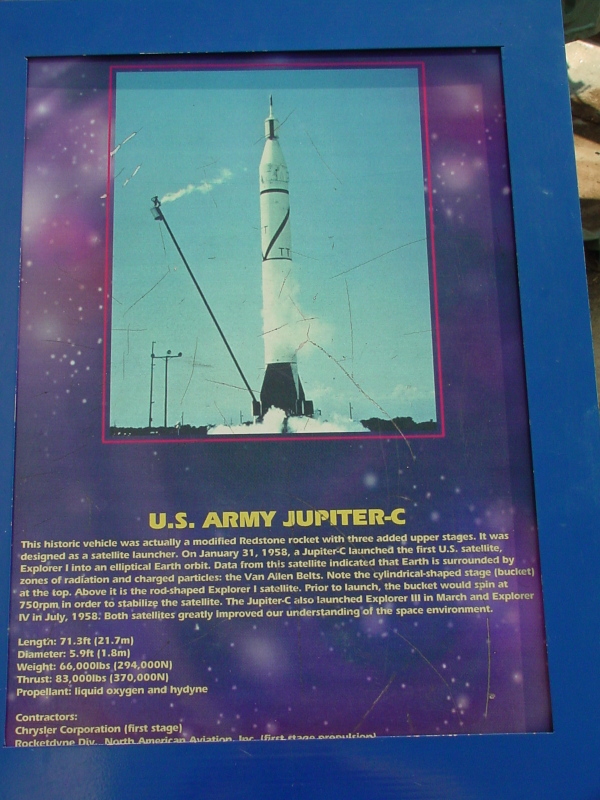| Prev |
heroicrelics.org U.S. Space & Rocket Center Site Index Jupiter-C Gallery |
Next |
dsc00219.jpg
An older version of the sign next to the F-1 engine. It was replaced sometime around 2005.
It reads
This historic vehicle was actually a modified Redstone rocket with three added upper stages. It was designed as a satellite launcher. On January 31, 1958, a Jupiter-C launched the first U.S. satellite, Explorer I into an elliptical Earth orbit. Data from this satellite indicated that Earth is surrounded by zones of radiation and charged particles: the Van Allen Belts. Note the cylindrical-shaped stage (bucket) at the top. Above it is the rod-shaped Explorer I satellite. Prior to launch, the bucket would spin at 750 rpm in order to stabilize the satellite. The Jupiter-C also launched Explorer III in March and Explorer IV in July, 1958. Both satellites greatly improved our understanding of the space environment. U.S. Army Jupiter-C
Length: 71.3 ft (21.7m)
Diameter: 5.9 ft (1.8m)
Weight: 66,000 lbs (294,000N)
Thrust: 83,000 lbs (370,000N)
Propellant: liquid oxygen and hydyneContractors:
Chrysler Corporation (first stage)
Rocketdyne Div. - North American Aviation Inc (first stage propulsion)
Of course Newtons are the metric unit of thrust, so having a weight of 294,000N is rather silly. The weight is actually about 29,937 kg.

| Time picture taken | Sat Jul 27 09:35:39 2002 |
| Location picture taken |
Rocket Park U.S. Space & Rocket Center Huntsville, AL |
| Prev |
heroicrelics.org U.S. Space & Rocket Center Site Index Jupiter-C Gallery |
Next |